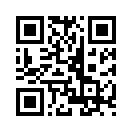
The subject of debate is: Word of Mouth...
Internet Can Drive Word of Mouth Even Better Than Television
There's no arguing that word of mouth (WOM) marketing impacts sales. And while a large number of people talk about content they found online, three-quarters of the time those conversations take place offline.
A recent study from Yahoo on WOM marketing demonstrates that the Internet has grown more influential when it comes to informing people through conversations about brands, even more so than TV in certain categories. The study also finds that the best vehicles for influencing WOM come from consumers who play in social networks. These "Conversation Catalysts" drive a disproportionately higher percentage of WOM activity.
While many marketers have little doubt that the Internet can influence WOM marketing nearly as much as TV, the huge gap in budgets for online versus television tells a different tale, says Radha Subramanyam, Yahoo vice president, who heads corporate and media research. "There's a bit of an intellectual gap in how marketers spend their budget that doesn't exactly tie to ROI," she says.
Although only 7% of all brand-WOM conversations occur online, 38% of people have brand-WOM conversations both online or offline influenced by the Internet, which Yahoo estimates at 74 million people.
Among the media channels influencing WOM, the Internet has grown while others like television and print remain flat. The level of Internet references rose to 15% in January 2010, compared with nearly 12% during the same time in the year-ago period.
Despite the buzz around social media and its role in WOM, most conversations take place face to face. Media -- both online and off -- are influential in driving these conversations, but it's important to note that 76% of WOM conversations take place in person.
Two-thirds of WOM is positive, and only 8% is negative, according to the study.
Certain categories such as financial and automotive appear to do better than health and health care and personal care and beauty. The study recognizes a 17% impact on finance from the Internet, compared with 8% for television. Yahoo believes that impact has a 1% bump to 18% on its network.
The study finds that Yahoo's audience drives more WOM marketing for automotive and finance categories. While the Facebook and YouTube audiences both have a considerable reach, a much higher volume of auto and finance WOM occurred among the Yahoo audience since January.
Automotive in Yahoo's network drove 54% of WOM marketing volume compared with 48% in Facebook; 46%, YouTube; 21%, MSN; 17%, AOL; and 15%, Hulu. Finance in Yahoo's network drove 55% of WOM marketing volume, compared with 48% in Facebook; 40%, YouTube; 23%, MSN; 17%, AOL; and 14%, Hulu.
Conversation Catalysts have become the most valuable WOM segment, because they have a large social network, belong to clubs, organizations and social groups, and often give advice in five or more product categories. They are 20% more likely to mention the Internet in brand WOM conversations.
This trend is driven by millennials, Subramanyam says. "This generation is moving into the years of life where they think about purchases. These kids are now becoming adults," she says. "This generation is the first that literally grew up with the Internet."
As millennials become the new adults, marketers will see an interesting cultural shift, Subramanyam says.
Even so, there's a missed opportunity in understanding that traditional Internet marketing has a bigger impact on word of mouth, says Brad Fay, chief operating officer at Keller Fay Group, and marketing consultant at McKinsey. "There's a big opportunity to drive word of mouth using something as simple as a brand Web site," he says. "The study found it's the number one component to drive word of mouth through the Internet."
About 15% of all conversations include something from people who found the information online, Fay says. People sit side-by-side with a mobile device in hand, talking about restaurants, clothing stores or services they read about online, he says.
The study concludes that Internet content can significantly impact WOM activity, especially on sites that serve this market segment known as Conversation Catalysts.
Yahoo partnered with Keller Fay to observe WOM activity from more than 18,500 survey respondents between August 2009 and January 2010. WOM conversations were tracked with the assistance of a 24-hour diary and follow-up contacts to answer standardized questions about brands and companies they talked about.
(Source: Online Media Daily, 06/11/10)
Saturday, June 26, 2010
TV vs Social Media
Posted by
ScLoHo (Scott Howard)
![]()
![]()
Labels: internet, social media, television, Word of Mouth
Subscribe to:
Post Comments (Atom)







No comments:
Post a Comment